Featured Speakers
Foundational Research for Digital Engineering
Tuesday, October 8, 2024 9:00 AM
Dr. Venke Sankaran, Chief Scientist for the Aerospace Systems Directorate
Air Force Research Laboratory
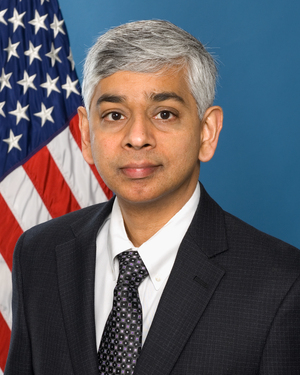
Dr. Venke Sankaran, a member of the scientific and professional cadre of senior executives, is the Chief Scientist for the Aerospace Systems Directorate, Air Force Research Laboratory, Wright Patterson Air Force Base, Ohio. He advises the director and guides the technical staff in the execution of the directorate's $500M science and technology portfolio in turbine engines, high-speed systems, power & controls, air vehicles, rocket propulsion, and modeling & simulations. He also provides expert technical consultation to Air Force organizations, the Department of Defense, other government agencies, universities and industry. Previously, Dr. Sankaran served as the Senior Scientist for Rocket Propulsion, Aerospace Systems Directorate, where he was responsible for guiding the Air Force and Space Force near- and long-term research and development needs in the field of rocket propulsion. From January 2019 to December 2019, he also served as the Acting Chief Scientist of the Air Force Office of Scientific Research of the Air Force Research Laboratory. In this role, he was the principal science and technology adviser to the director in matters of formulation, planning, managing and integration of the Air Force's $500M basic research investment. The author of more than 200 technical papers, Dr. Sankaran has been actively involved in several funded programs involving rocket propulsion, aerodynamics, hydrodynamics and plasmas. His research has been instrumental in the development of advanced algorithms for extending computational fluid dynamics methods to all flow regimes, including all Mach numbers, viscous-dominated regions, unsteady flows, generalized equations of state and multiphase flows. His research application interests have included solid, liquid and electric propulsion systems, rotorcraft aerodynamics and underwater vehicles. He is an AIAA Associate Fellow and ASME Fellow and received his Ph.D. from Penn State in 1990.
Computational Fluid Dynamics role in System of System Performance and Effectiveness Analysis
Wednesday, October 9, 2024 9:00 AM
Dr. Scott A. Morton, Senior Scientist for High Fidelity Modeling and Simulation
Air Force Research Laboratory

Dr. Scott A. Morton, a member of the Scientific and Professional Cadre of Senior Executives, is the Senior Scientist for High Fidelity Modeling and Simulation (M&S), Air Force Research Laboratory, Air Force Materiel Command, Eglin Air Force Base, Florida. In his role as Senior Scientist for High Fidelity M&S, he serves as the principal scientific authority and independent researcher in the research, development, and implementation of multi-physics, high fidelity modeling and simulation capability and their integration into higher campaign level simulations to meet future Air Force weapons and warfighter capabilities. He also serves as the senior leader driving the strategic direction of M&S for the enterprise and its integration into multi-domain capabilities and concepts. Dr. Morton began his Air Force career in 1985 as a commissioned 2nd Lieutenant through the Reserve Officer Training Corps after graduating from Parks College of St. Louis University. During his career, he received his Master of Science and Doctor of Philosophy degrees from the Air Force Institute of Technology. As a civilian, he was an Associate Director of the U.S. Defense Department High Performance Computing Modernization Program with responsibility for software across the enterprise including the Computational Research Engineering Acquisition Tools and Environments (CREATE) Program. He also spent more than 10 years as the Principal Developer of the Kestrel fixed wing aircraft product used by over 1,200 DoD and OEM engineers and scientists. He is a Fellow of the American Institute of Aeronautics and Astronautics and of the Royal Aeronautical Society.
PANEL SESSION: Development, Progress and Future Directions of Overset Methods: Insights from Pioneers and Pathfinders
Wednesday, October 9, 2024 2:45 PM
Dr. John A. Benek, Senior Scientist for Computational Fluid Dynamics
Air Force Research Laboratory
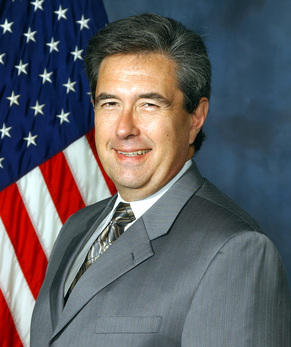
Dr. John A. Benek, a member of the scientific and professional cadre of senior executives, is the Senior Scientist for Computational Fluid Dynamics, Aerospace Systems Directorate, Air Force Research Laboratory, Wright-Patterson Air Force Base, Ohio. He provides leadership and strategic vision for the Directorate's research and development programs in high-fidelity, physics-based modeling of fluid flows and fluid-coupled multidisciplinary phenomena. In addition, he advises the Air Force on fluid-flow simulation capability. Dr. Benek joined the Air Vehicles Directorate in 2003 as a senior scientist. He has extensive technical management experience and a broad range of experimental and computational experience covering the range of flow phenomena, from rarefied to continuum, across the subsonic to hypersonic speed regimes. He has led both basic and applied research efforts in these areas. In addition, he is a pioneer in combining experimental and high-fidelity physics simulations to reduce system development risk and cost. To further this concept, he has established a network of close ties with NASA, Army, Navy and Department of Energy organizations. Dr. Benek has served on numerous strategic planning groups with the test and evaluation community. He is a Fellow of both the American Institute of Aeronautics and Astronautics, and the Arnold Engineering and Development Center, and a member of the International Test and Evaluation Association and a member of the Scientific Research Honor Society Sigma Xi.
Dr. Pieter G. Buning, Senior Research Aerospace Engineer
NASA Langley Research Center
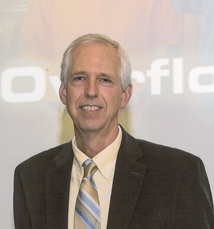
Dr. Buning received BS degrees in Aerospace Engineering and Computer Engineering from the University of Michigan, and MS and PhD degrees in Aeronautics and Astronautics from Stanford University. He joined NASA Ames Research Center in 1979, studying numerical methods, computational efficiency and scientific visualization, authoring the PLOT3D visualization code for CFD. After spending a year at Boeing, Pieter returned to Ames in 1989 to work on development of overset grid methods, with application to the Space Shuttle launch vehicle. This work, in collaboration with team members at Ames Research Center and Johnson Space Center, led to development of the OVERFLOW CFD code and various grid generation tools for complex configurations. Starting in 1992, these tools were further refined on subsonic commercial transport configurations. Pieter transferred to NASA Langley in 1996, where he continued to work on CFD tool development and applications, including stage separation, capsule aerodynamics, and Mars entry, descent and landing. He is currently in the Computational AeroSciences Branch, where his research is focused on improving the accuracy of CFD simulation for rotorcraft flows. The accomplishments and impacts of Pieter's career have been recognized both inside and outside of NASA with numerous individual and team awards. Notably in 2001, he received a NASA Exceptional Engineering Achievement Medal "For exceptional contributions to the advancement of computational fluid dynamics for complex aerospace geometries through the development and continuous improvement of the overset grid based method known as OVERFLOW." And in 2015, he received a NASA Exceptional Technology Achievement Medal "For significantly enhancing numerical prediction of aerospace vehicle aerodynamics through sustained leadership of the OVERFLOW computational fluid dynamics code development." The American Institute of Aeronautics and Astronautics (AIAA) elected him an Associate Fellow in 1997 and in 2016, they recognized him with the AIAA Aerodynamics Award. Pieter is currently working half-time, and will fully retire in November 2024.
Dr. Robert Meakin, Former DoD HPCMP Associate Director for CREATE
DoD HPCMP (Retired)
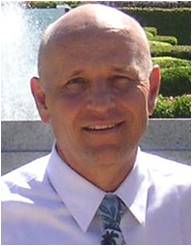
Dr. Meakin received his PhD in Civil Engineering from Stanford University in 1986. He retired as DoD HPCMP Associate Director for CREATE in 2021, after managing the Air Vehicles component of the program from 2008 - 2019. He is an Associate Fellow of the American Institute of Aeronautics and Astronautics and has authored over 40 publications in professional journals, refereed conference publications, and books. His technical areas of expertise include multi-physics software engineering, aerodynamics, fluid dynamics, computational geometry, multiple-body proximate flight with contact detection and collision dynamics, numerical methods, parallel and scalable computing, and moving boundary problems.
Dr. Thomas H. Pulliam, Senior Research Scientist
NASA Ames Research Center (Retired)

Dr. Pulliam received his B.S. in Mathematics from Michigan Technological University in 1973, his M.S. in Applied Mechanics from Stanford University in 1974 and his Ph.D. in Applied Mechanics from Stanford University in 1976. He started at NASA Ames as an NRC Associate in 1977 and was a NASA civil servant from 1980 until his retirement in 2020. At NASA Ames, he was Head of the Computational Physics Section, Computational Fluid Dynamics Branch from May 1986 to Dec. 1992 and then a Senior Staff Scientist from Jan. 1992 to Jan. 2020. He was also a research scientist with Flow Simulations, Inc. from Oct. 1979 to Apr. 1980 and a consulting professor and lecturer with Stanford and San Jose State University. He is currently a Consulting Senior Scientist with Science & Technology Corp, assisting NASA research scientists in use of OVERFLOW as applied to NASA Orion capsule development, MARS landing aerobraking vehicles, and other aerodynamic and space related projects. His research and contributions include: developer of ARC2D and ARC3D, first 2D and 3D implicit finite-difference Euler and Navier-Stokes codes; co-developer of OVERFLOW overset code, and over 130 publications in journals, AIAA meeting, and conferences.
Space Shuttle Ascent CFD Analysis - A Historical Perspective (VIRTUAL)
Thursday, October 10, 2024 8:00 AM
Mr. Fred Martin, Aerospace Engineer (Retired)
NASA Lyndon B. Johnson Space Center
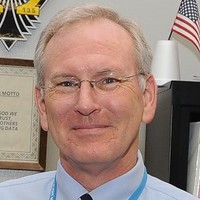
Fred worked for NASA as an aerospace engineer for over 36 years, retiring in 2017. He now does consulting work in the aerospace industry. He received his Master of Science in Aerosopace, Aeronautical and Astronautical Engineering from Auburn University in 1980 and his Bachelor of Science in Aerospace Engineering from Auburn University in 1978. He is a member of the American Institute of Aeronautics and Astronautics.